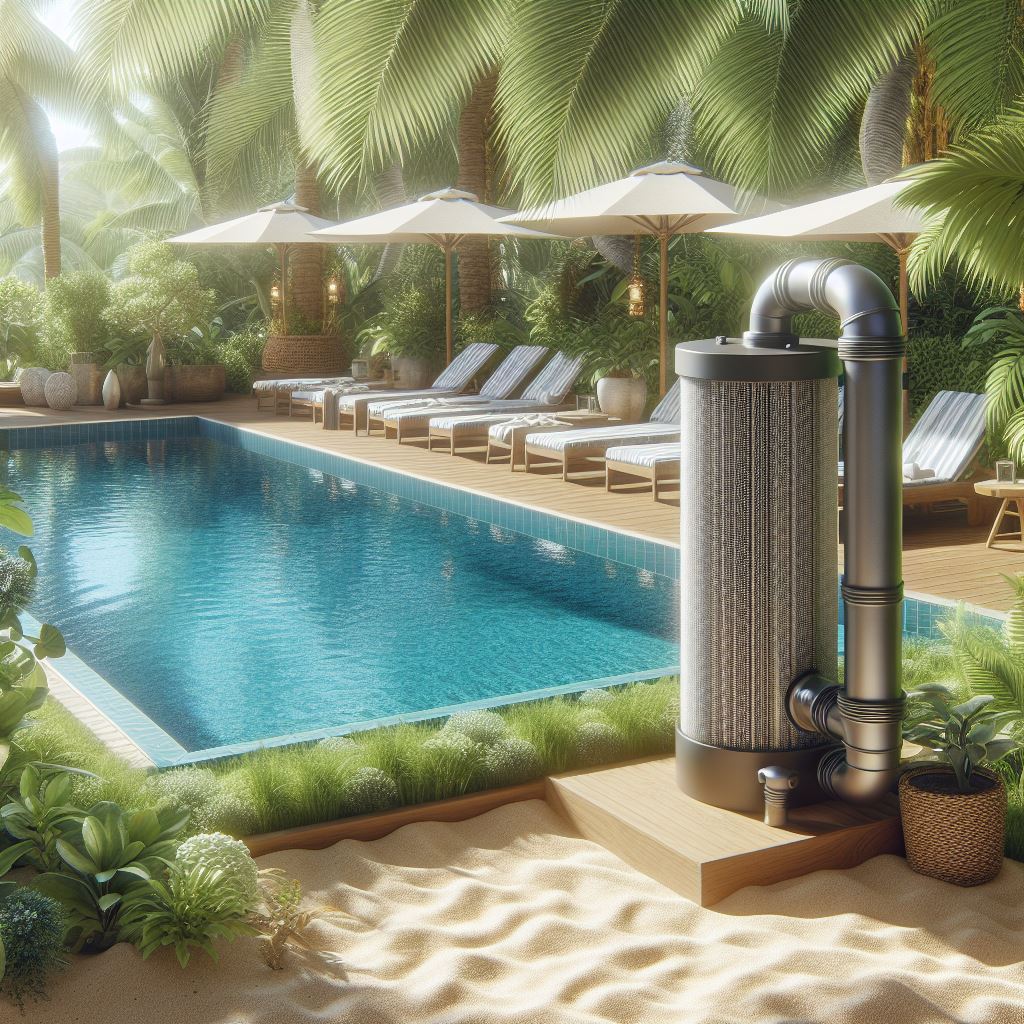Choosing the right sand filter for a swimming pool is crucial for maintaining clean and safe water quality. The size and model of the sand filter will directly affect its filtering effectiveness and efficiency. Choosing a filter that is too small may lead to inadequate filtration, while an overly large filter may lead to energy wastage. Below is a detailed guide on selecting the appropriate sand filter for a swimming pool:
Determine Pool Capacity
The capacity of the pool is the primary consideration when choosing the size of a sand filter. To accurately calculate the pool’s capacity, you need to measure the length, width, and average depth of the pool. These measurements will help you estimate the total volume of the pool, thereby aiding in the selection of an appropriate filter. Pool capacity is usually calculated in gallons or cubic meters. For example, if a pool is 10 meters long, 5 meters wide, and has an average depth of 2 meters, its capacity is 100 cubic meters (10 x 5 x 2 x 1000 = 100,000 liters or 100 cubic meters).

Understand Filter Flow Rate
The flow rate of a sand filter refers to how much water it can filter per hour, typically expressed in gallons per hour (GPH) or cubic meters per hour (m³/h). The selected filter should be able to process the entire volume of the pool within a relatively short period, typically recommended to be between 6 to 8 hours. This means if your pool has a capacity of 100 cubic meters, you should choose a filter that can handle at least 12.5 to 16.7 cubic meters per hour (100 / 8 to 100 / 6 hours).
Consider Pump Compatibility
When choosing a pump, its flow rate should be compatible with the maximum flow rate of the filter. If the pump’s flow rate exceeds the filter’s capacity, it will overburden the filter, potentially leading to premature wear or decreased filtering efficiency. Conversely, too small a pump flow rate might extend the filtering time, increasing energy consumption. Therefore, matching the pump flow rate is crucial to ensure the system’s overall performance and durability.
Choose the Appropriate Filter Media
While traditional sand filters use sand of a specific grain size, modern filters can also use alternative materials such as glass beads or zeolite. These new filter media may offer higher filtering efficiency and lower maintenance requirements. For instance, glass beads can provide finer filtration, while zeolite is more effective at adsorbing pollutants due to its larger surface area.
Consider Installation and Maintenance
When installing a sand filter, ensure there is sufficient space for operation and maintenance. Regular maintenance, such as replacing the sand or cleaning the filter, is key to ensuring the filter operates effectively over the long term. Choosing a filter model that is easy to maintain can significantly reduce the workload and costs associated with regular upkeep.
Conclusion
Selecting the right sand filter is essential for maintaining the cleanliness and safety of the pool water. Understanding the accurate capacity of your pool, choosing a filter with an appropriate flow rate, ensuring pump compatibility, selecting efficient filter media, and considering ease of installation and maintenance are all important parts of making a wise choice. Proper configuration not only maintains water quality but also extends the life of the equipment and ensures the economical and efficient use of the pool. By carefully evaluating and choosing, you can find the most suitable sand filter for your pool, ensuring a clean and safe swimming experience.